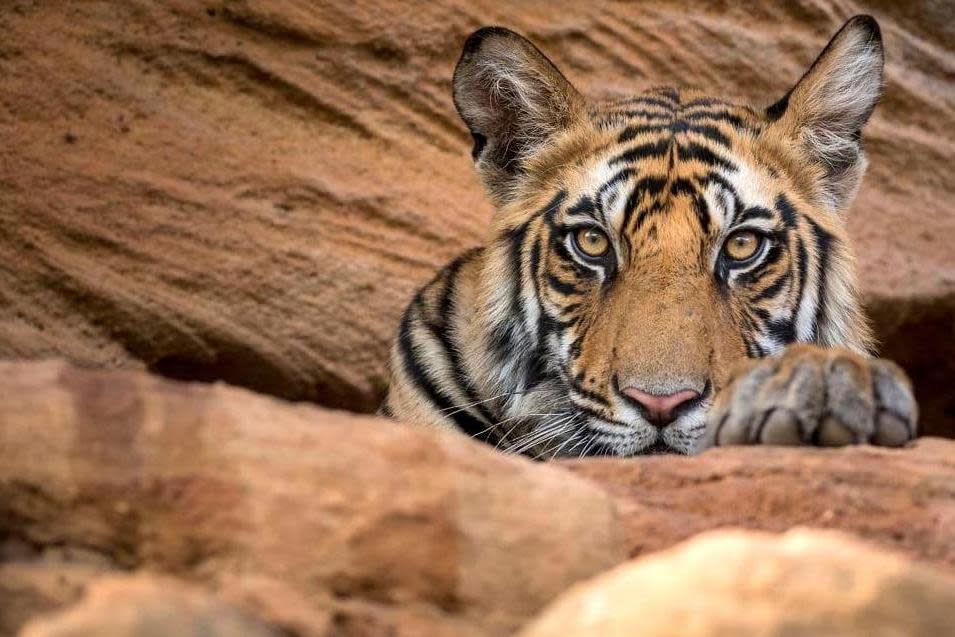Dynasties, episode 5, review: Sir David Attenborough mixes cute presentation with hard facts about humanity

As the title of Sir David Attenborough's latest series suggests, I suppose all natural history pretty much boils down to the creation and preservation of dynasties – survival of the fittest, and all that.
Given that Attenborough celebrated his 92nd birthday this year, and that he has been roaming around the treacherous world of television, mostly unscathed, since 1954, he’s quite a fine example of Darwinist principles himself.
One way in which he has managed to protect this branch of the Attenborough dynasty is by helping produce series such as Dynasties, which roars to its conclusion in the company of a majestic and endearing (for flesh-ripping alpha predators) tigers.
They were filmed over a two year period – that’s some admirable level of commitment by the BBC – in Bandhavgarh National Park’s tiger reserve in India. After Attenborough – giving his usual slightly breathy voice over and occasionally popping up in vision – the superstar of the show is an extremely handsome tigress Raj Bhera, a single mum if you will, with Bollywood qualities, bringing up her “family” of four cubs, three male, one female.
I hadn’t realised quite how patriarchal tiger societies are. Dad is glimpsed only briefly, when his cub “daughter” manages to track him down elsewhere in the reserve, and, after an exchange of grumbles, he legs it, as if he’s just had a visitation from the Big Cat Child Support Agency.
Once the cubs are ready to start eating the meaty meals their mum hunted down for them, the males always get first go, and the female cub has to hang around for whatever scraps the boys left over, a sort of gender pay gap right there. Plainly, none of them have heard of the Equality Act 2010.
There is an odd flaw in the documentary’s format though, which is that one of the biggest threats to the survival of Raj Bhera’s dynasty is in fact her elder daughter from a previous tiger relationship. Solo, is her name, and she is filmed pushing her luck by invading her mother’s territory and poaching the odd snack. Yet, given that Solo shares the same proportion of her DNA as does her younger brood, this is more about supremacy within a dynasty rather than of this particular dynasty.
It doesn’t matter much though, because the documentary is put together with all the usual supreme craft that the BBC and Attenborough have been deploying in the name of conservation and environmental awareness for six decades and more.
There are few novelties, in truth, compared to say, Blue Planet or that famous moment almost 40 years ago when Attenborough got pally with a troop of gorillas. There are the usual shots of the tigress chasing after deer, monkeys and, in desperation, a preening peacock (which makes off with an unlikely turn of speed in full display, like Usain Bolt wearing a frock designed by the late Alexander McQueen). I think I've even seen tiger cubs playing around a den before, though they are always adorable to watch.
The music laid over the action is well paced and never gratuitous, the photography as breathtaking as you would expect the Indian rainforest to show itself, and the clips of the conservationists and park wardens are just the right length – not too didactic. There is a short sequence in which Raj Bhera is in mortal danger, having wandered too close to a village full of fearful farmers. She is rescued by park officials before things go too far, but her dynasty, like all the tiger dynasties in India’s small and overcrowded national parks, including the 80 in the Bandhavgarh reserve, is in danger. Sir David is still getting the message across, mixing cute almost anthropological presentation with some less palatable hard facts about the faults of the human dynasty.

 Yahoo News
Yahoo News 